Our advanced yoga series is again deigned to work in conjunction with your physiotherapy rehabilitation program and should not be attempted before first consulting your physiotherapist or osteopath.
Our yoga poses below are deigned specificly to work in conjunction with your physiotherapy rehabilitation program to improve your general flexibility, postural awareness, core stability, breathing and relaxation.
Please consult your physiotherapist or osteopath before starting this series as you may need specific adaptations, depending on your injury.
Please consult your physiotherapist or osteopath before attempting this pose.
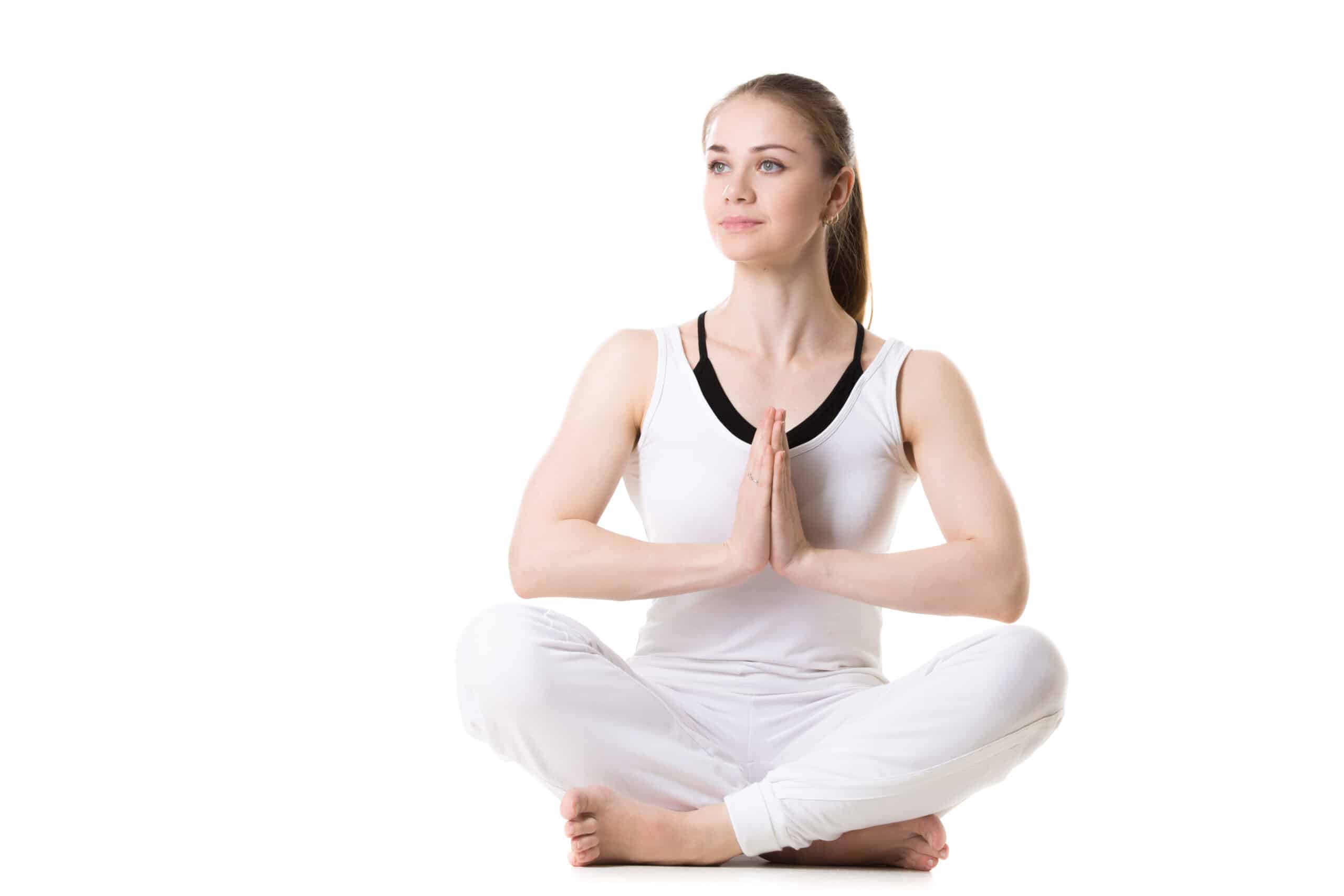
Target areas: Hips, back, shoulders and arms.
Steps:
– Start in a seated position, directly on your sitting bones with a straight back.
– Bend your knees and cross your lower legs.
– Bring the shoulders blades back and down.
– Bring the palms of your hands together with the fingers pointing up and gentle rest them together.
– Allow your elbows to gently elevate to the sides of your body.
– To aid you, try sitting on a yoga block.
– Keep your head aligned directly over your tailbone and try not to lean your body forward.
– Hold for two deep relaxed breaths trying to gently breath out smoothly for 10secs on each breath.
Please consult your physiotherapist or osteopath before attempting this pose.
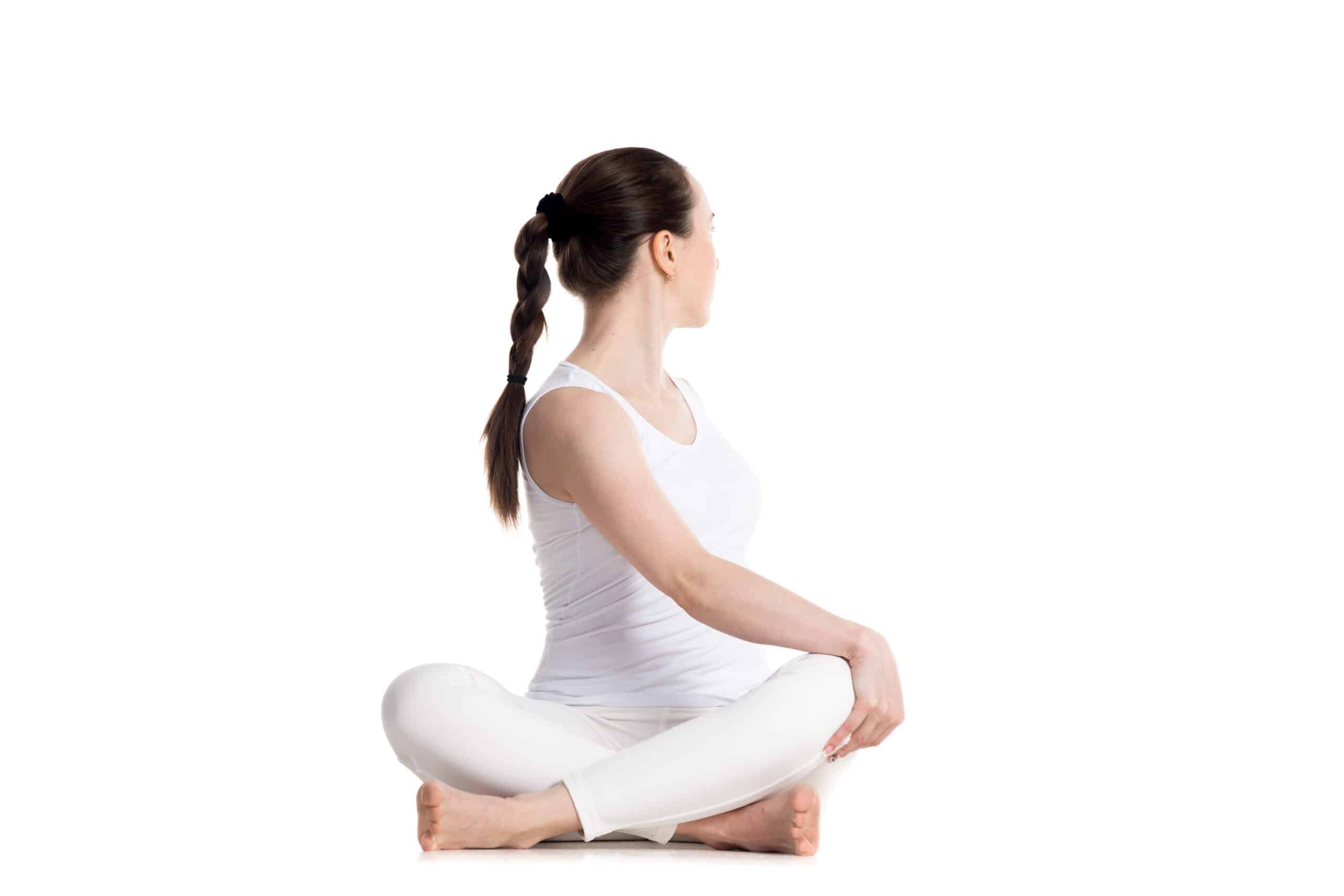
Target areas: Hips, back and shoulders.
Steps:
– Start in a seated position, directly on your sitting bones with a straight back.
– Bend your knees and cross your lower legs.
– Bring the shoulders blades back and down.
– Place one hand on the floor behind you and bring the other hand to the outside of your other knee.
– To aid you, try sitting on a yoga block.
– Gently exhale as you twist.
– Keep your head aligned directly over your tailbone and try not to lean your body forward.
– Hold for two deep relaxed breaths, trying to gently breath out smoothly for 10secs and releasing into the stretch on each exhalation.
– Repeat the pose on the opposite side.
Please consult your physiotherapist or osteopath before attempting this pose.
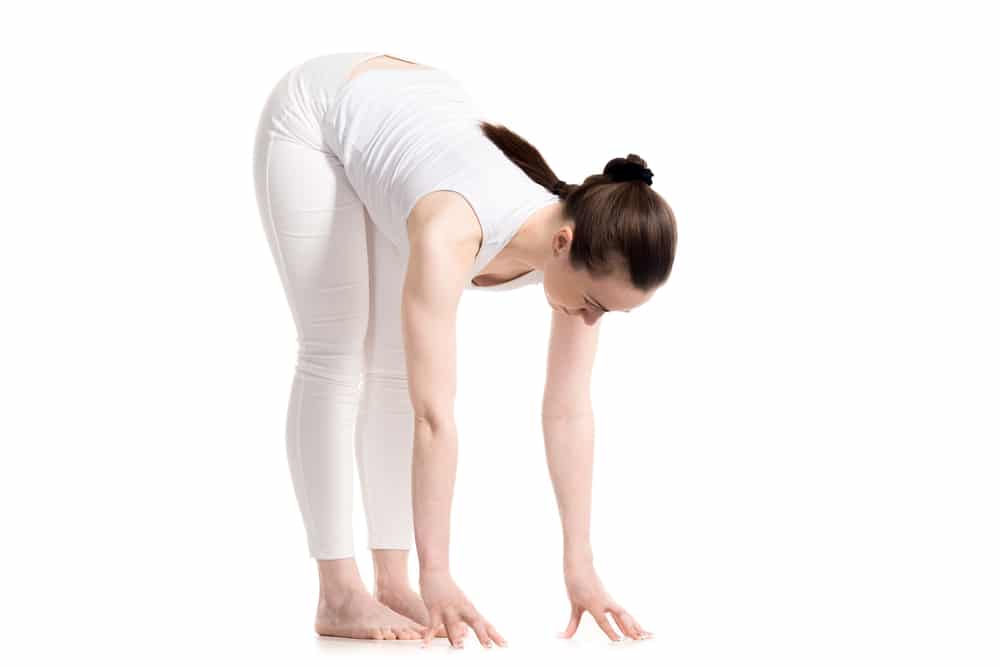
Target area: Hamstrings and Calf muscles.
Steps:
– From an upright standing position, exhale as you bend forwards from the hip joints.
– As you move more fully into the pose allow your torso to gently lengthen.
– Gently encourage your knees to straighten as you lower your finger tips to the floor.
– Gradually push your heals into the floor and lift the sitting bones.
– To increase the stretch hold the backs of your ankles.
– To reduce the stretch cross the arms and hold onto your elbows.
– Hold for two deep relaxed breaths, trying to gently breath out smoothly for 10secs and releasing into the stretch on each exhalation.
Please consult your physiotherapist or osteopath before attempting this pose.
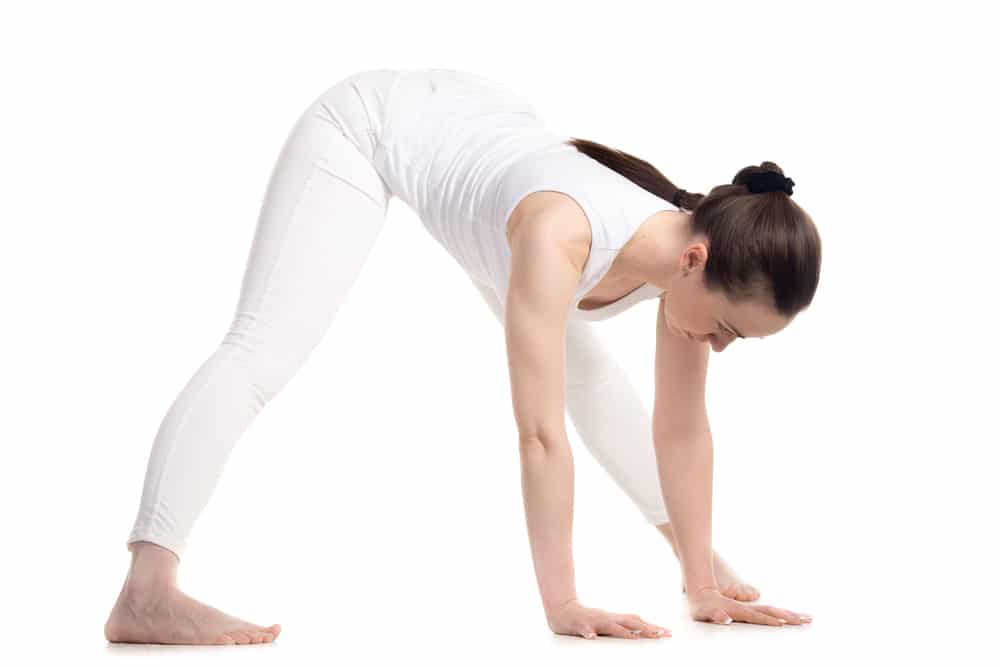
Target area: Hamstrings, Calfs and Torso.
Steps:
– Start in an upright standing position, with the legs just over hip width apart and the feet slightly pointing in.
– Exhale as you bend forwards from the hip joints.
– As you move more fully into the pose allow your torso to gently lengthen.
– Gently encourage your knees to straighten as you lower your finger tips to the floor.
– Gradually push your heals into the floor and lift the sitting bones.
– To increase the stretch hold the backs of your ankles.
– To reduce the stretch cross the arms and hold onto your elbows.
– Hold for two deep relaxed breaths, trying to gently breath out smoothly for 10secs and releasing into the stretch on each exhalation.
Please consult your physiotherapist or osteopath before attempting this pose.
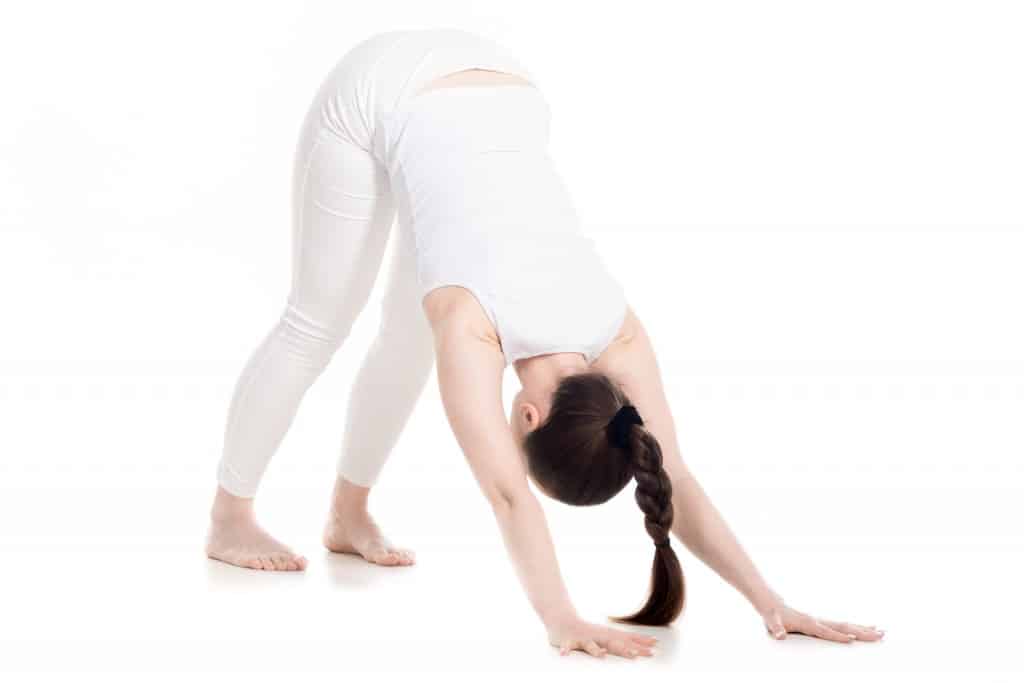
Target area: Calf muscles, hamstrings and low back
Steps:
– Start on all fours with the knees under the hips and the hands under the shoulders with the fingers spread.
– As you breath out tuck the toes and lift your knees off the floor.
– Extend the elbows, spread the fingers and push the floor away from you.
– Relax the upper back.
– Lift through the pelvis to bring the body into an triangular shape.
– Hold for two deep relaxed breaths, trying to gently breath out smoothly for 10secs and releasing into the stretch on each exhalation.
Please consult your physiotherapist or osteopath before attempting this pose.
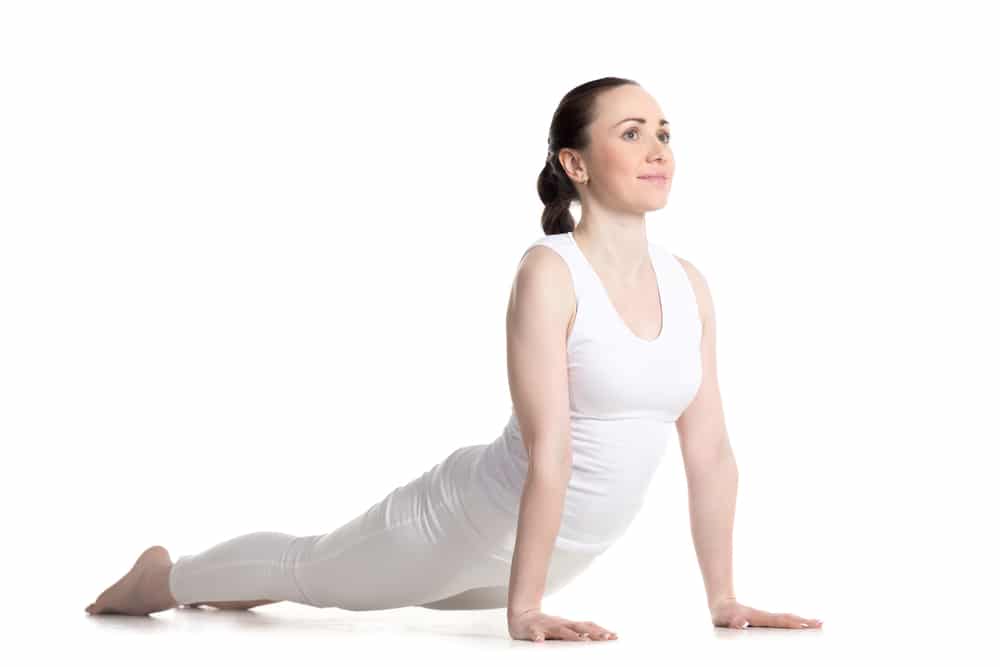
Please consult your physiotherapist or osteopath before attempting this pose.

Target area: Hip flexors.
Steps:
– From downward facing dog exhale to bring one foot forward to between your hands so that the knee is aligned over the heel.
– Lower the opposite knee to the floor and gently allow the leg to slide back with the top of the foot resting on the floor.
– Inhale as you lift your torso, pointing your chest forward and looking straight ahead.
– Bring your shoulder blades back and down, keeping your head aligned directly over your tailbone and avoiding allowing your body to lean forward.
– Hold for two deep relaxed breaths, trying to gently breath out smoothly for 10secs and releasing into the stretch on each exhalation.
– Repeat the pose on the opposite side.
Please consult your physiotherapist or osteopath before attempting this pose.
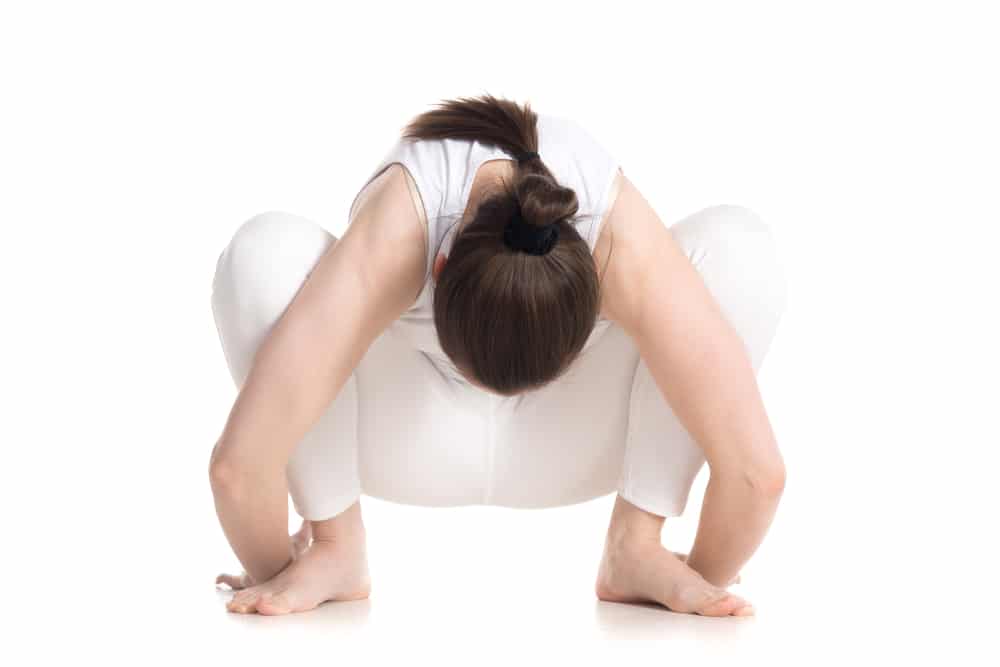
Pose: pigeon
Target area: Hip rotators, low back, hamstrings and ankles.
– As you rest down into the squat be mindful not to force the heels down or bend the knees past their limit and rest your heels on a cushion or block if necessary.
– Allow your weight to go through your heels and slightly lean forward.
– Use your elbows to gently push your knees outward.
– To increase the stretch gently grasp your heels
– Hold for two deep relaxed breaths trying to breath out for 10secs on each breath.
Our advanced yoga series is again deigned to work in conjunction with your physiotherapy rehabilitation program and should not be attempted before first consulting your physiotherapist or osteopath.
This is an advanced yoga pose and should not be attempted before consulting your physiotherapist or osteopath.

Target area: Hamstrings and Calfs.
Steps:
– Start in a seated position, directly on your sitting bones with a straight back.
– Slide one leg forward and gently allow your head and then body to follow.
– To aid you, try sitting on and resting your head on yoga blocks. Also try placing a cushion or rolled up yoga mat underneath the knee of your straight leg.
– Hold for two deep relaxed breaths, trying to gently breath out smoothly for 10secs and releasing into the stretch on each exhalation.
– Repeat the pose on the opposite side.
This is an advanced yoga pose and should not be attempted before consulting your physiotherapist or osteopath.

Target area: Hamstrings, Calfs and Torso.
Steps:
– This is an advanced pose and should not be completed unless you are first fully comfortable with all the other poses in the seated series.
– Start in a seated position, directly on your sitting bones with a straight back.
– Bend your knees and cross your lower legs.
– Bring the shoulders blades back and down.
– Straighten one leg forward and gently allow your head and then body to follow.
– To aid you, try sitting on and resting your head on yoga blocks. Also try placing a cushion or rolled up yoga mat underneath the knee of your straight leg.
– With the opposite arm to the straightened leg reach over you head.
– With the lower arm tuck the elbow in front of the straightened knee.
– To increase the stretch gently, relax the upper arm further as you exhale, to eventually grip the hand of the lower arm.
– Hold for two deep relaxed breaths, trying to gently breath out smoothly for 10secs and releasing into the stretch on each exhalation.
– Repeat the pose on the opposite side.
This is an advanced yoga pose and should not be attempted before consulting your physiotherapist or osteopath.
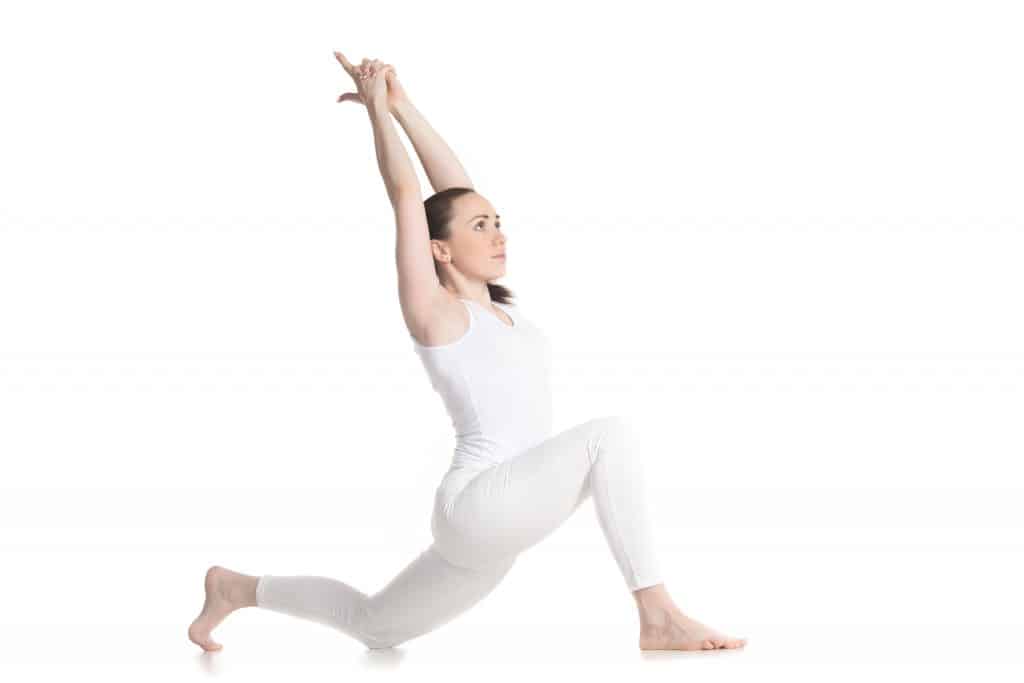
Target area: Hip rotators
Steps:
– From the low lunge step onto your toes and draw your tailbone towards the floor.
– Lift your pubic bone towards your navel.
– Lift your chest and draw your shoulder blades back and down against your ribs.
– Reach your fingers up to the ceiling.
– Take your head back and slightly look up without pivoting from the base of the neck.
– Hold for two deep relaxed breaths, trying to gently breath out smoothly for 10secs and releasing into the stretch on each exhalation.
– On the final exhalation lower your arms back to the low lunge and allow your toes to tuck back under.
– Repeat on the opposite side.
This is an advanced yoga pose and should not be attempted before consulting your physiotherapist or osteopath.
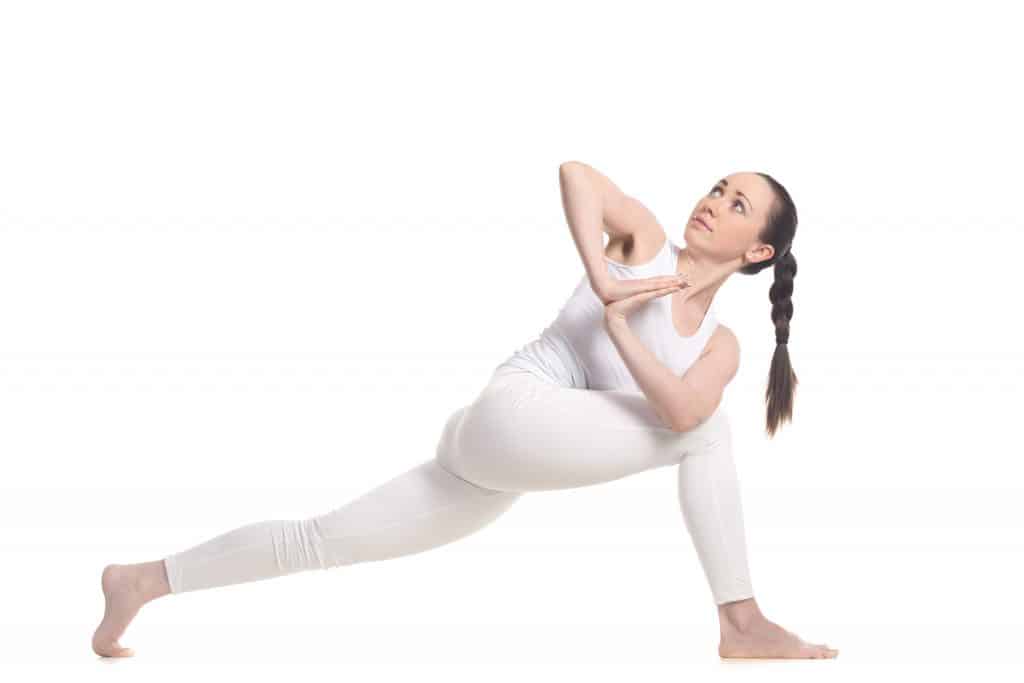
Target area: Hip rotators
Steps:
– Place the elbow on the outside of the opposite knee.
– Bring the shoulders blades back and down.
– Bring the palms of the hands together with the fingers pointing up and gently press them together.
– Keep your head aligned with your tailbone avoiding leaning forward from the torso and avoid twisting your neck.
– Hold for two deep relaxed breaths, trying to gently breath out smoothly for 10secs and releasing into the stretch on each exhalation.
– Repeat the pose on the opposite side.
– Hold for two deep relaxed breaths, trying to gently breath out smoothly for 10secs and releasing into the stretch on each exhalation.
– On the final exhalation lower your arms back to the low lunge and allow your toes to tuck back under.
– Repeat on the opposite side.
This is an advanced yoga pose and should not be attempted before consulting your physiotherapist or osteopath.

Target area: Hip rotators
Steps:
– Start on all fours with your hands shoulder-distance apart and just in front of your shoulders.
– Bring one knee forward to behind the wrist on that side, with your shin on a diagonal.
– Take the opposite leg back so that your thigh is squarely placed against the floor and avoiding allowing the back leg to externally rotate, tuck your toes under.
– Lift the inner thigh of the front leg up towards the ceiling and move the hipbone of the back leg forward so that both hipbones are parallel.
– To aid the pose rest a yoga block underneath the buttock of the front leg. It is important to maintain the hipbones in a parallel position without twisting through the low back or applying force through the front knee.
– To increase the stretch gently move the toes of the back leg back slightly and point your toes so that the thigh releases to the floor.
– Then move the foot and shin of the front leg forward, aiming to have your shin parallel to the front of the yoga mat.
– Hold for two deep relaxed breaths, trying to gently breath out smoothly for 10secs and releasing into the stretch on each exhalation.
– Repeat the pose on the opposite side.
© Copyright 2024
LudgateClinic 101 Fleet Street London, EC4Y 1DE
020 7427 0080